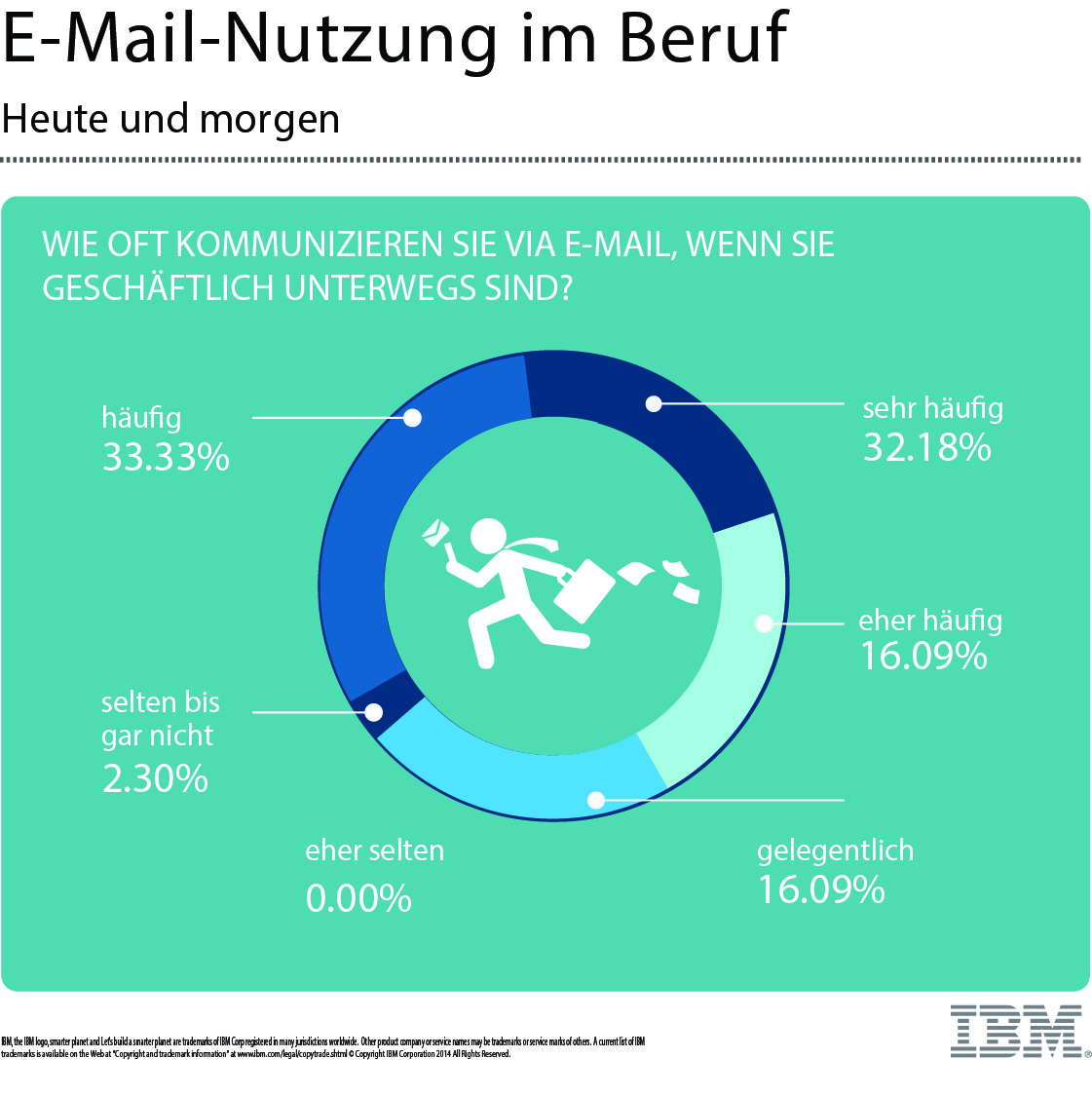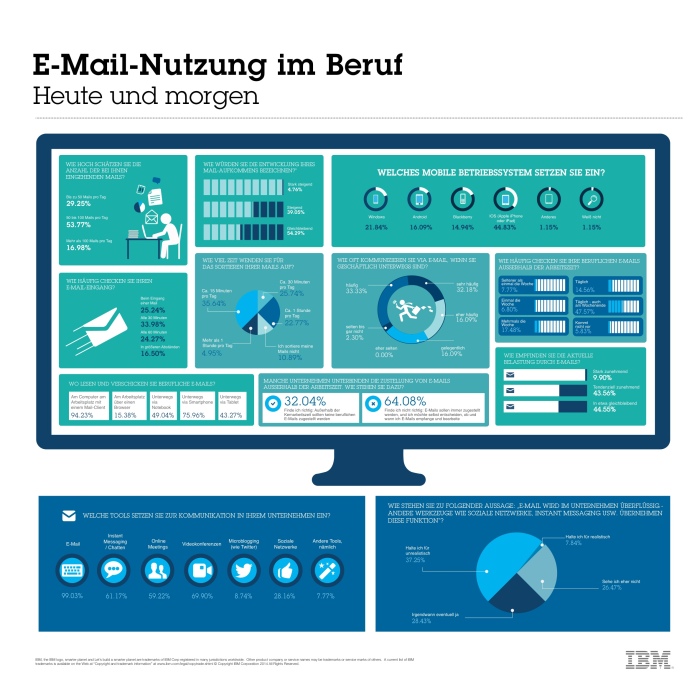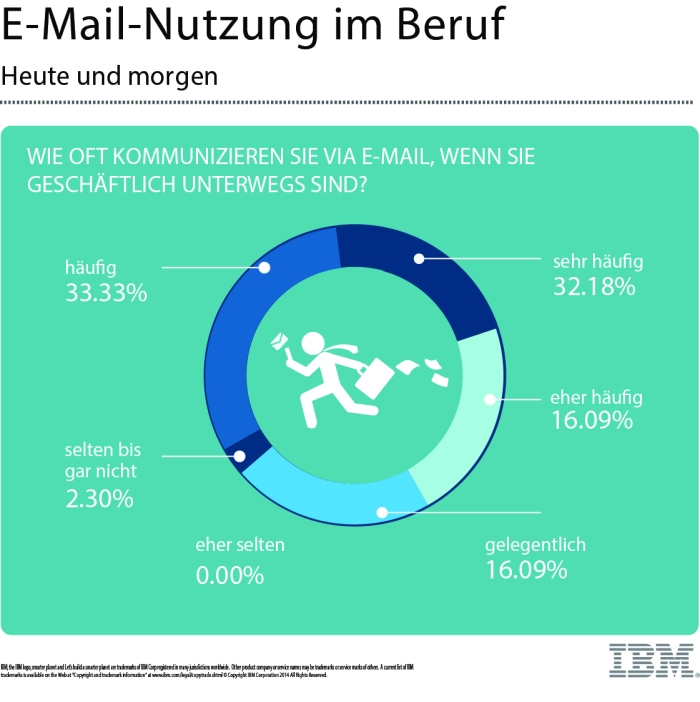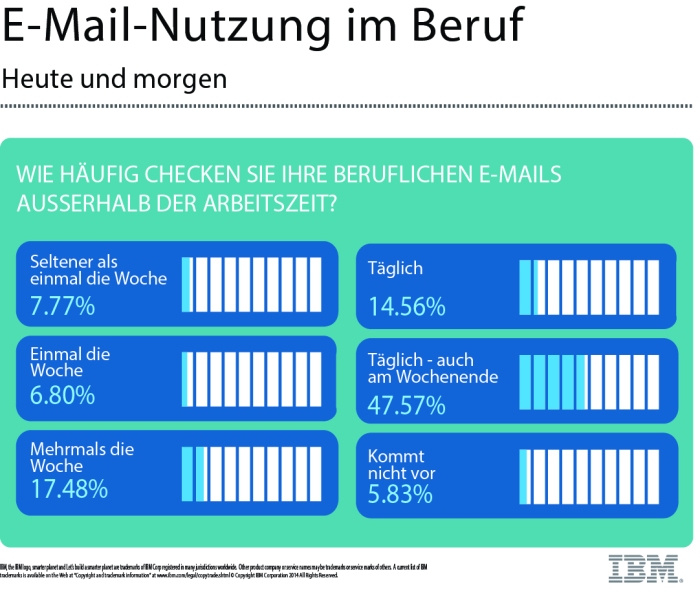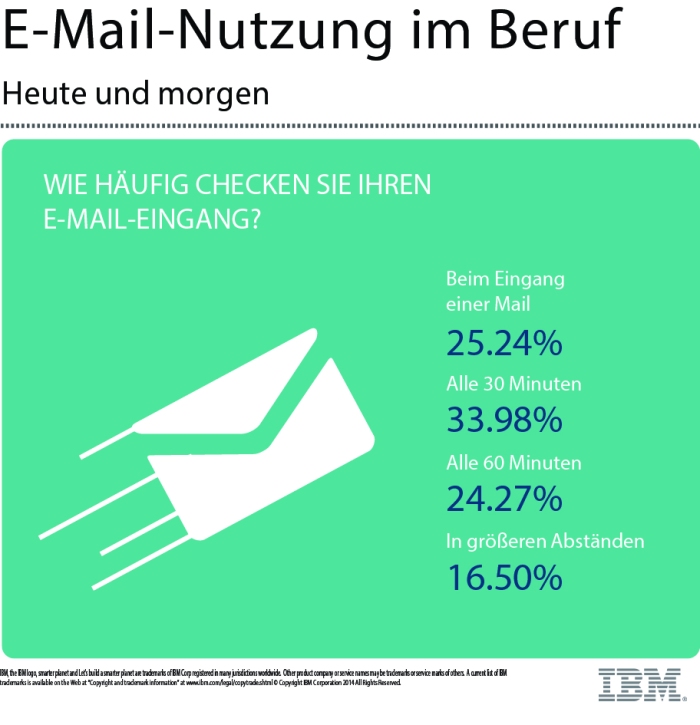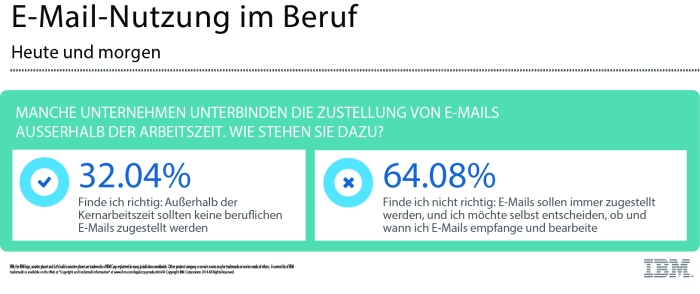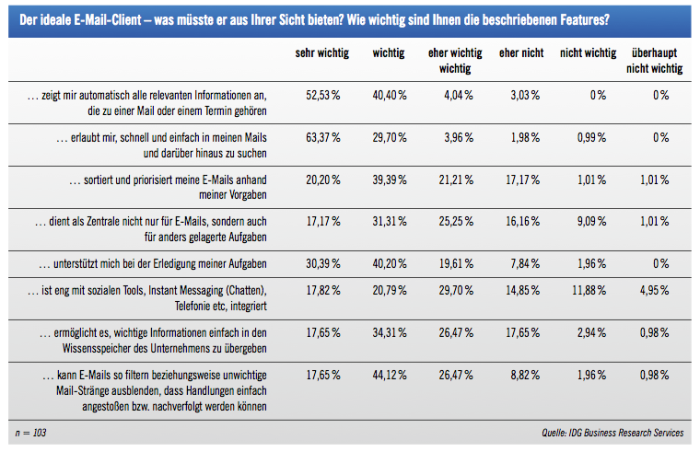The discussion about the death of mail is endless. My former IBM colleague Luis Suarez was propagating a life without emails over the last years. The IT consulting firm Atos Origin announced to work and collaborate without mail. German vehicle-maker Daimler put a policy in place, where employees are allowed to delete mails received during their holidays.
On the other side the advocates of email are hammering on the strength of email. The biggest strength is in my opinion acceptance. In contrast to social networking tools everybody knows, how to use email. BUT: In particular the younger generation is no longer on mail. They are much more on short messaging services or video calls.
I really doubt that mail is going away. And mail should not go away. There are a lot of use cases, where mail is exactly the right tool, others where instant messaging or social networking are much more efficient. McKinsey states in its 2012 report “The social economy: Unlocking value and productivity through social technologies” that improved communication and collaboration through social technologies could raise productivity of interaction workers by 20 to 25 percent. Teach the users to use the right tool at the right moment for the right purpose is in my opinion the secret sauce.
One thing is right for sure: We need to have better ways to deal with mail and todays email systems dramatically need to improve. Honestly I have not seen any major innovation since the early days of email. You have an inbox cluttered with more and more emails. Yes, there have been functional enhancements like rules, Google created a bit different view for mails. Ok, I admit, that mobile mail was an innovation – but isn’t this often a pain, when you feel you have to check email early in the morning and late in the evening after work hours. But beyond that have we really seen innovation? Have we seen innovation that makes the daily life and work with email easier. Not really!
IBM is now taking a new approach to address the daily email challenge in corporations. Leaving technical details aside for the moment, this vision of mail of the future is important and might be a game changer in using mail. It goes beyond traditional mail addressing the real pain points of the mail flood through fueling mail with social technologies and analytical capabilities supporting the users. Needless to say, that this mail experience has to be available not only on a traditional client but on all major mobile devices.
Ease of use, a new, clear and user-friendly interface are key in the Digital Age driven by mobile devices and social technologies. Once IBM was well known for great design. Think about the IBM typewriter. In the last years their software was not always famous for ease of use as most of the software from B2B software vendors. A while ago essentially Apple has changed the expectations of users through launching iPhone and iPad with easy-to-use apps (not only from Apple) focusing on key features and usability on mobile devices. Dropbox, Evernote and others have set new expectations in usability. The shadow IT, where people use apps not made for Enterprise usage in business, is driving change. And this good.
Therefore IBM is investing heavily into design and opens design centers around the world. Yes, you read right. In July 2012, the IBM Design organization was created with the mission “re-thinking everything we do from the standpoint of our clients, and intentionally designing products and services for the people who use them.” In support of this mission, the organization devised the IBM Design Thinking framework, based on design thinking methods pioneered by Stanford’s d-school.
Designers follow IBM Design Thinking to understand users, explore concepts, prototype designs and evaluate them with users and stakeholders—and it is this framework used to consider how email, of all things, could become a great user experience for the users.
What does is mean practically?
We are all stressed by multi-tasking. To many applications and tabs are open at the same time. To many interruptions in our work, where we are loosing time to refocus on things we just wanted to do. We loose the overview and our concentration. One promise of IBMs vision of mail formerly called IBM Mail Next, now announced as IBM Verse is to offer a personalized, easy-to-use space for the entire workday. Can or will it replace all applications and tabs? Fore sure not, but it could clean away some of the clutter helping to focus on get work done.
Multi-tasking is one challenge. Another one is the need to prioritize, because so many actions are on our radar screen. And during the day new stuff pops up and we tend to loose track of priorities. An intelligent mail system helps addressing this pain point through a prioritization feature that quickly shows the top actions that I either owe or am owed. The technology is meanwhile there to personally assist using analytics and following user behavior to guide through the work day. Clients using IBM Verse will also have the future option to embed a Watson feature into their collaboration environment, which enables users to query Watson on a given topic and receive a direct reply with answers ranked by degree of confidence.
What is still even after years a big challenge? Find the right information is often like searching the needle in the haystack. In particular finding information somewhere in the personal email jail can be extremely challenging despite existing search technology. And to get a complete picture on a certain topic, users usually need to go to different places and collect the information. IBM promises a new search, better find experience, which allows to quickly drill down into your results with a range of powerful filters. Find not only exactly what you were looking for, but hidden gems you’d forgotten about or never knew existed.
We are talking about today’s sharing economy. And sharing plays a more and more important role in our daily business life. Ever tried to move an email conversation out of mail into a community? State of the art mail needs to have a specific focus on sharing conversation threads, docs and more. This is bridging the gap between mail jail and social technologies driving transparent collaboration for better results while maintaining the right security in the enterprise.
So making these four challenges less painful is in the centre of IBMs vision of mail: Multi-tasking, prioritizing, finding and sharing. Doesn’t sound a lot? Don’t agree. If new, improved mail eases our daily work around these four threats of the 20th century office worker, we are more than one step further.
IBM announced this new Enterprise Email solution called IBM Verse to be available first quarter 2015. IBM Verse stems from the company’s $100 million investment in design innovation and brings together its leading cloud, analytics, social and security platforms to transform the future of work. Selected customers are already part of the design and in the beta program. A freemium version delivered via the IBM Cloud Marketplace will be available to individuals in the first quarter of 2015. In a first stage it is cloud-delivered, a mobile-optimized personal assistant with the promise to prioritize, personalize and free people up to just get work done, a critical gateway to becoming a more social business and building a smarter workforce. If it delivers on its promises, IBM Verse is a game changer in the email market. It would be bigger and more than what we today call email.
For more information on how IBM is transforming the future of work, visit www.ibm.com/verse.
Read a blog post from one of the creators of IBM Verse, visit http://ibm.co/1qPynF6.
The replay of the IBM Verse launch is available here on YouTube.
Filed under: English Tagged: Collaboration, E-Mail, featured, IBMMailNext, SocBiz


